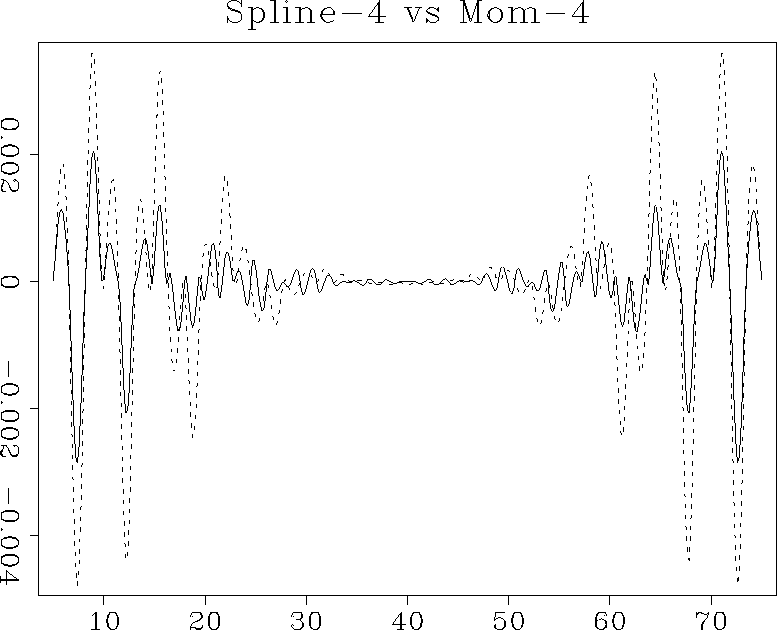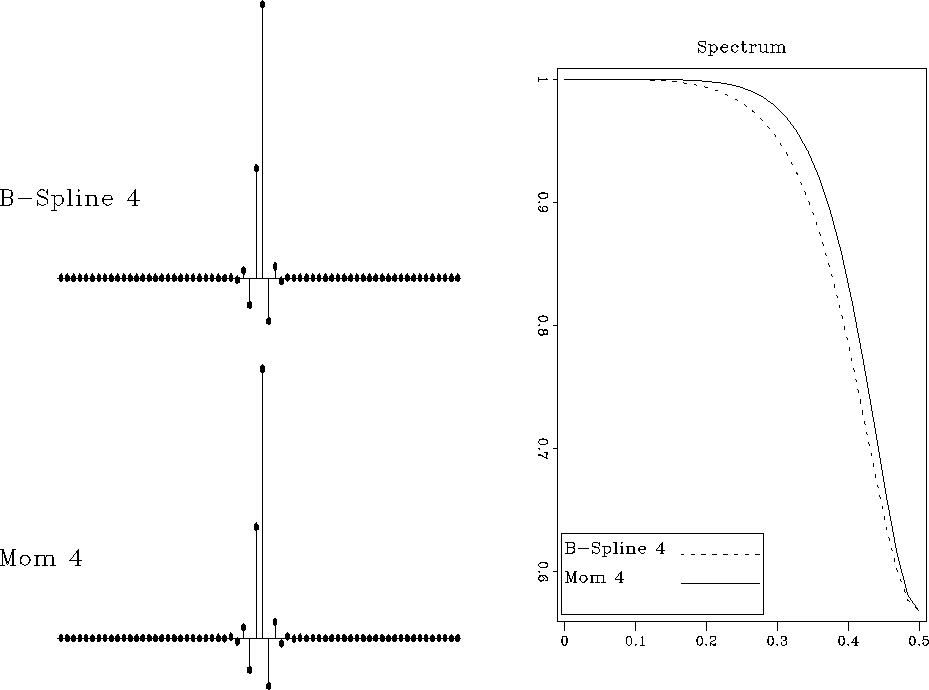![[*]](http://sepwww.stanford.edu/latex2html/cross_ref_motif.gif) ) but slightly better interpolation behavior:
) but slightly better interpolation behavior:
It is not too difficult to construct a convolutional basis with more
accurate interpolation properties than those of B-splines, for example
by sacrificing the function smoothness. The following piece-wise cubic
function has a lower smoothness than ![]() in
equation (
in
equation (![[*]](http://sepwww.stanford.edu/latex2html/cross_ref_motif.gif) ) but slightly better interpolation behavior:
) but slightly better interpolation behavior:
 |
(72) |
Figures ![[*]](http://sepwww.stanford.edu/latex2html/cross_ref_motif.gif) and
and ![[*]](http://sepwww.stanford.edu/latex2html/cross_ref_motif.gif) compare the test
interpolation errors and discrete responses of methods based on the
B-spline function
compare the test
interpolation errors and discrete responses of methods based on the
B-spline function ![]() and the lower smoothness function
and the lower smoothness function
![]() . The latter method has a slight but visible performance
advantage and a slightly wider discrete spectrum.
. The latter method has a slight but visible performance
advantage and a slightly wider discrete spectrum.
|
splmom4
Figure 25 Interpolation error of the third-order B-spline interpolant (dashed line) compared to that of the lower smoothness spline interpolant (solid line). |  |
|
specsplmom4
Figure 26 Discrete interpolation responses of third-order B-spline and lower smoothness spline interpolants (left) and their discrete spectra (right) for x=0.7. A slight but visible difference in the interpolation responses accounts for a small improvement in accuracy. |  |
Blu et al. (1998) have developed a general approach for constructing non-smooth piece-wise functions with optimal interpolation properties. However, the gain in accuracy is often negligible in practice. In the rest of the dissertation, I use the classic and better tested B-spline method.